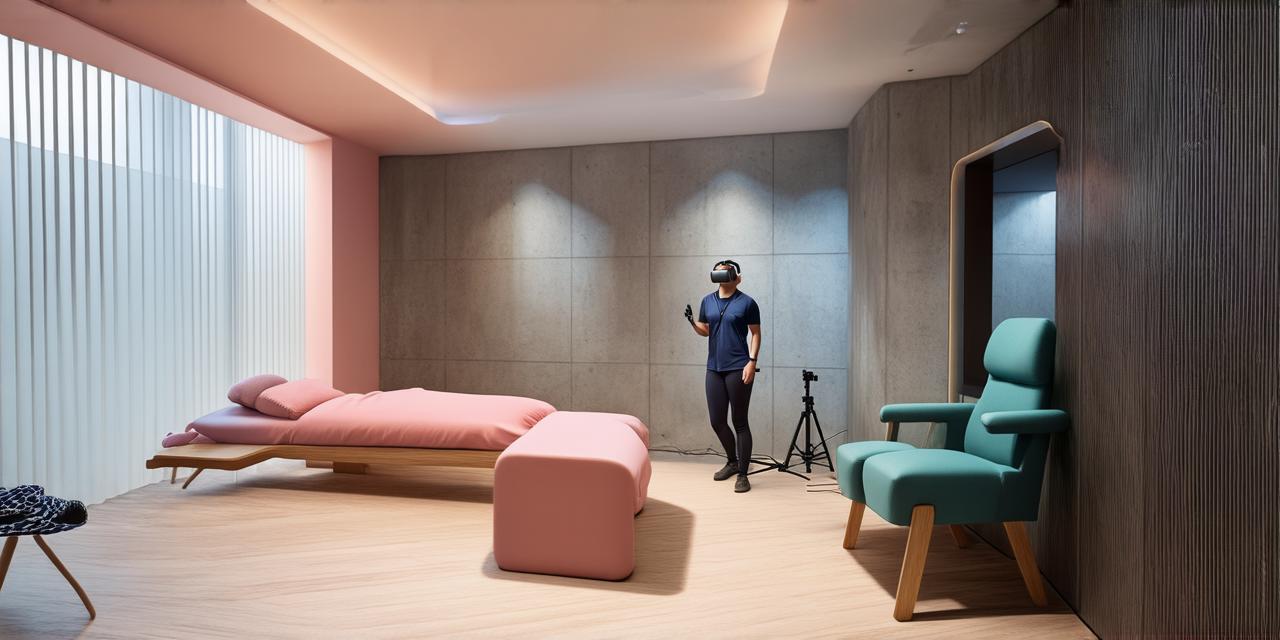Virtual reality (VR) technology is revolutionizing the field of mental health treatment, providing a safe and effective way for individuals to confront their fears and traumas in a controlled environment. With its ability to simulate real-life scenarios, VR exposure therapy has emerged as a promising tool for treating a range of mental health disorders.
One of the most significant advantages of VR exposure therapy is its ability to provide immediate exposure to triggering stimuli, allowing individuals to confront their fears and traumas in a safe and controlled environment. This immediate exposure can lead to rapid desensitization, making it an effective tool for treating anxiety and panic disorders.
People with anxiety and panic disorders often avoid situations or objects that trigger their anxiety, leading to a vicious cycle of fear and avoidance. VR exposure therapy allows individuals to confront these triggers in a controlled environment, gradually desensitizing them to the fear-provoking stimuli.
For example, a person with a fear of heights can use VR to simulate being on a tall building and gradually build up their tolerance to heights. This exposure therapy has been shown to be as effective as traditional in vivo exposure therapy, but with fewer side effects and less discomfort for the patient.
In addition to anxiety and panic disorders, VR exposure therapy can also be used to treat post-traumatic stress disorder (PTSD). People with PTSD often have flashbacks or nightmares related to traumatic events, which can interfere with their daily lives. VR exposure therapy allows individuals to safely revisit these experiences and process the emotions associated with them, helping them to overcome the fear and trauma that has held them back.
For instance, a person who experienced a car accident may use VR to simulate the accident, allowing them to confront their fears and work through the emotional trauma associated with it. This therapy can be especially helpful for those who have difficulty talking about or recalling the traumatic event.
Moreover, VR exposure therapy has shown promising results in the treatment of social phobias such as public speaking or social anxiety. By exposing individuals to these triggers in a controlled environment, they can learn coping strategies and gradually become more comfortable in social settings. This is particularly beneficial for individuals who struggle with social situations due to fear of judgment or negative evaluation from others.
In addition to these specific disorders, VR exposure therapy has also shown potential applications in the treatment of depression, particularly those who have experienced trauma or have difficulty engaging in activities that were once enjoyable. By simulating real-life situations that trigger feelings of sadness or hopelessness, individuals can learn to manage their emotions and develop new coping strategies. This therapy can be especially helpful for individuals who struggle with negative self-talk or feelings of worthlessness, which are common symptoms of depression.
One of the most significant advantages of VR exposure therapy is its ability to provide a safe and controlled environment for individuals to confront their fears and traumas. Unlike traditional in vivo exposure therapy, which requires real-life situations, VR exposure therapy allows individuals to confront their fears in a virtual environment that can be tailored to their specific needs and triggers. This provides a sense of safety and control, making it an attractive option for individuals who may not be ready or able to confront their fears in real life.
Another advantage of VR exposure therapy is its ability to provide immediate feedback and track progress over time. By tracking exposure time and monitoring changes in symptoms, mental health professionals can adjust the treatment plan as needed to ensure optimal results. This level of flexibility and customization makes VR exposure therapy an attractive option for individuals with complex or severe mental health disorders.
However, it is important to note that VR exposure therapy may not be suitable for everyone, and careful consideration should be given to each individual’s unique needs and circumstances. For example, individuals with certain medical conditions such as epilepsy or motion sickness may not be able to tolerate VR exposure therapy. Additionally, individuals with severe mental health disorders may require additional support and guidance from mental health professionals during the treatment process.
In conclusion, VR exposure therapy is a promising tool for treating a range of mental health disorders, including anxiety and panic disorders, PTSD, social phobias, and depression. By providing a safe and controlled environment for individuals to confront their fears and traumas, VR exposure therapy can help them to overcome these challenges and live more fulfilling lives. As the technology continues to evolve, we can expect to see even more exciting developments in this area of mental health treatment.
